The Art of the Phone
Writer John ZeamanA selection of winners from the 2018 iPhone Photographer Awards
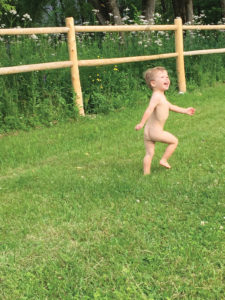
Like most people nowadays, I take pictures with my smartphone. I can’t remember the last time I used a regular camera. The phone camera is just too convenient, both because it’s always in my pocket and because it’s equipped to launch the pictures into the world. Plus, it takes great pictures.
This came as a great surprise to me. I was late to the smartphone revolution. By the time I got one, it was an iPhone 6. Prior to that, I used a simple flip phone. It served its fundamental purpose, but the photos on its postage-stamp-size screen were grainy and either underexposed or overexposed. When I wanted to take photographs, I used a 35mm digital camera. I expected to keep doing so after I got the iPhone. After all, how good a camera could there be inside this slender device? Taking pictures wasn’t even its primary function.
Not long ago, I used my camera phone to photograph my 2-year-old grandson running naked through the grass. Like all kids that age, he likes casting off his clothes. He also knows that his parents—for reasons incomprehensible to him—frown on his doing this in public.
Opportunity presented itself on a summer visit to our house in the country. Benjamin had just stepped out of his bathing suit. A path to freedom beckoned. He toddled off the deck and ran down the long sloping lawn. He looked like a mischievous Cupid. My son, Alex, was soon lumbering after him.
As an indulgent grandfather, I was ready with my camera phone. I snapped pictures of the errant toddler’s flight, the capture and his return on his father’s shoulders. I assembled my photo narrative and showed it to my wife. From her the images went out to friends and family. Alex posted it on Facebook.
Everyone thought the pictures very cute. But a friend of my wife, a video producer, singled out one of them for a different kind of praise. “That’s a great photo,” she said. “John should enter that in a contest.”
Contest? I took another look at my picture. Well, I thought to myself, it was a pretty good photo. The perfect angle. The subject caught in mid-stride, his face erupting in glee and innocent defiance. I thought of Henri Cartier-Bresson, father of modern street photography, who said a photo should capture a “decisive moment.” By this, he meant the essence of a fleeting, spontaneous event. My photo certainly did that. All it needed to be perfect was a little cropping.
No one can see the details, the sharpness and wide-angle focus that digital cameras do
After I was finished congratulating myself, I had to admit that it was complete luck. I had no strategy or artistic idea to guide what I was doing. My motives were entirely sentimental. As to technique, well, I pointed my phone at the subject and pushed the button. Unlike Cartier-Bresson, I didn’t have to worry about focus, shutter speed, lens aperture or how much film was in the camera. I didn’t have to develop my pictures or print them out.
The phone did everything.
Reflecting on my accidental excellence, I was reminded of the famous mathematical notion about the typing monkeys. It proposes that an infinite number of monkeys hitting the keys of an infinite number of typewriters for an infinite amount of time would eventually produce the complete works of Shakespeare.
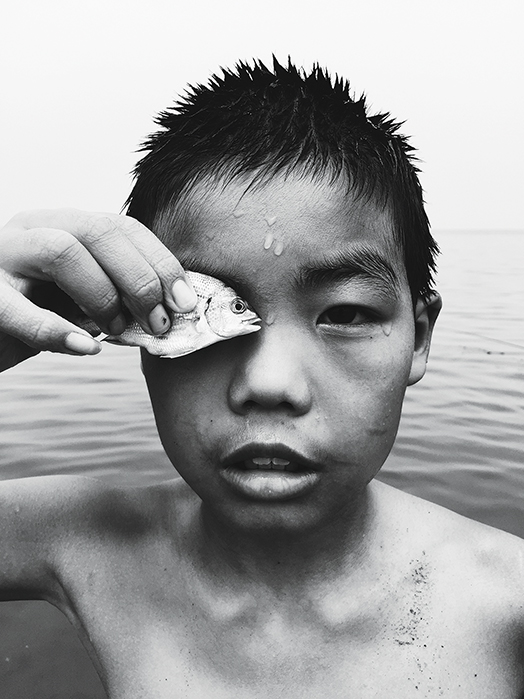
Photographer | Huapeng Zhao, China Honor | Photographer of the Year: Second Place Title | Eye to Eye artist’s statement | I met this boy while walking at the seaside. When I was trying to take a picture of him, he put the fish he caught in front of his eye. Location | YanTai, ShanDong province, China. Shot on iPhone 6
Today, there are something like 2.4 billion smartphone users in the world. Let’s say that only a tenth of them use the cameras on their phones on a given day. Suppose each of them takes only one photo (this rules out any teenage participants). That comes out to 240 million photos a day, or 87.6 billion a year. Picture all these snapshots: waterfalls, rainbows, sunsets, the Eiffel Tower, Times Square, Big Ben, the Hollywood sign, giant sequoias, Beverly Hills mansions, Shanghai skyscrapers, Michelangelo’s David, adorable kittens, adorable puppies, monkeys, elephants, cruise ships, Tibetan monks, soccer players, new cars, newly dented cars, new houseplants, dead houseplants, men holding up fish, women on beaches, brides and grooms, mothers holding newborns, and children at play, including, to be sure, some running naked through the grass. And, let’s not forget all the millions of selfies—a genre invented for the smartphone camera.
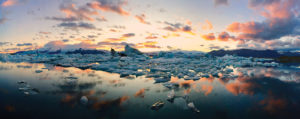
Photographer | Mateusz Piesiak, Poland Honor | Panorama: First Place Title | Icebergs artist’s statement | In summer the sun is above the horizon nearly all day where Vatnajökull glacier meets the Atlantic Ocean. Location | Iceland Shot on iPhone 6 Plus
Each of these photos would have some meaning to the people who took them and, presumably, the people on the receiving end. For the rest of us, who cares? Only a tiny percentage would have the stuff to make you take notice. But even a tiny percentage of such a large number would yield many great pictures. Most would be like mine—elegant accidents. But not all. Some people, including professional photographers, have become serious about smartphone photography. Phone cameras may not have all the settings and equipment that go with 35mm cameras, but they make up for that with apps that allow for manipulation both before and after the exposure.
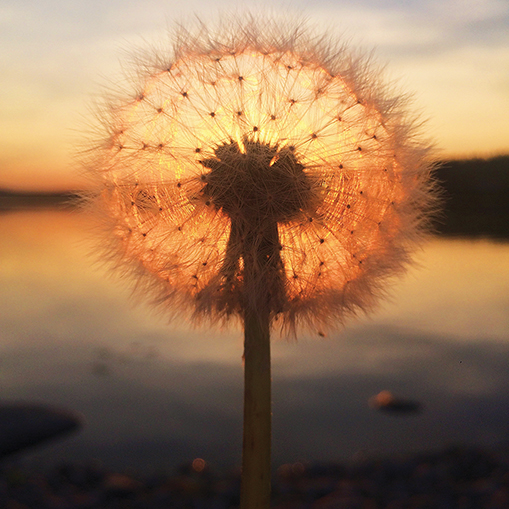
Photographer | Sara Ronkainen, Finland Honor | Sunset: First Place Title | Dandelion Sunset artist’s statement | In central Finland, summer days are long and sunsets beautiful. I was out walking by a lake one evening and saw dandelions floating in the breeze. Feeling inspired, I picked one, held it up and used it as a filter through which to capture the last rays of the day’s sun. Location | Jyväskylä, Finland Shot on iPhone 5s
Which brings us around to those contests my wife’s friend mentioned. Two of the big ones are the iPhone Photography Awards or IPPAWARDS and the Mobile Photography Awards or MPA. Both give prizes in multiple categories, 18 for the iPhone contest and 20 for the MPA. Some categories are predictable: travel, portraits, sunsets, children, architecture, animals, floral, nature, news and documentary. Others are more esoteric, such as abstract, silhouettes and images shot in the dark. There’s even one just for tree photography. This past year, the iPhone awards added a category titled “The America I Know,” for those who want to make a statement about American identity. In addition to competitions in individual categories, the contests give grand prizes for overall excellence.
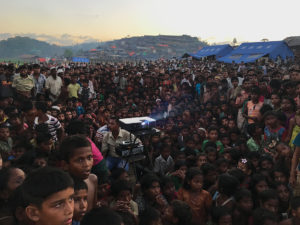
Photographer | Jashim Salam, Bangladesh Honor | Photographer of the Year: Grand Prize Title | Displaced artist’s statement | Rohingya children watching an awareness film about health and sanitation near Tangkhali refugee camp in Ukhiya. Location | Ukhiya, Bangladesh Shot on iPhone 7
This year’s winner in the iPhone contest is Jashim Salam, a 40-year-old documentary photographer and photo journalist from Bangladesh. He won for a photo that shows hundreds of Rohingya refugees at a camp in Bangladesh. They are crowded around a projector to see a film about health and sanitation. Over in the MPA, the top award went to a Chinese-born, London-educated photographer named Nan Deng, known on his website as AlexanDeng. He won for a group of photographs, most of them landscapes or cityscapes taken at night. In one, untitled, a town huddles at the foot of an eerily illuminated mountain.
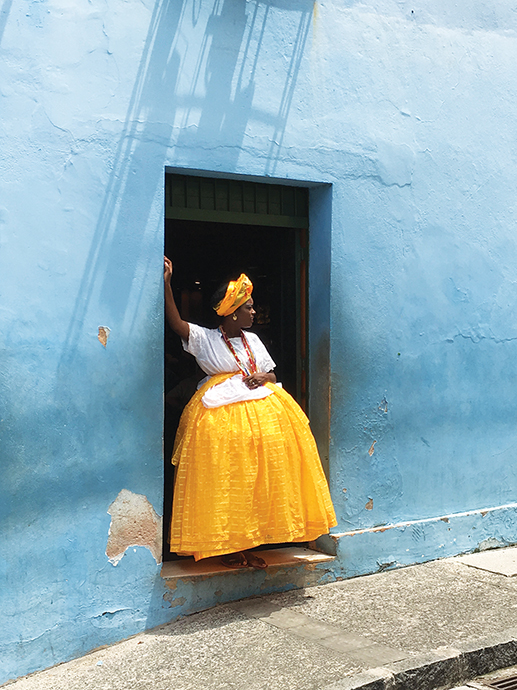
Photographer | Alexandre Weber, Switzerland Honor | Photographer of the Year: First Place Title | Baiana in Yellow and Blue artist’s statement | The picture was taken in Salvador de Bahia, Brazil, spontaneously, after a truck drove by. The woman with traditional clothes of a “baiana” was looking after the truck during her work break. Location | Salvador de Bahia, Brazil Shot on iPhone 6S
Any preconceptions that you had about smartphone photography will likely be shattered by scrolling through these photographs. I expected most of them to be in the Cartier-Bresson mold — “decisive moments” caught on the wing — because that’s something that smartphones are particularly good at. Many of them are, such as Alexandre Weber’s shot of a Brazilian woman in a billowy yellow dress standing in the doorway of a sky-blue stucco building. Or Huapeng Zhao’s picture of a boy at the seaside who held up a fish to his face so its eye substituted for one of his. Both were spontaneous situations. And yet, there were many pictures (check out the iPhone tree category) that have the meditative stillness and grandeur of Ansel Adams landscapes.

Photographer | Robin Robertis, United States Honor | Animals: First Place Title | “Django” Old Man Baby Dog artist’s statement | Django is a Shaolin Temple Terrier, born and raised in a Buddhist monastery in the northern province of Hunan China. Django likes long walks on the beach and listening to Miles Davis. Location | Carlsbad, California Shot on iPhone 7 Plus
Or check out the self-portraits in the MPA competition, which are a far cry from the run-of-the mill selfies that issue forth from millions of phones. Many are wackily surreal (contestants can manipulate pictures but only with the apps on their phones), with heads emerging out of other heads, faces reduced to dim blurs in the mirror and bodies being swallowed up by sand.
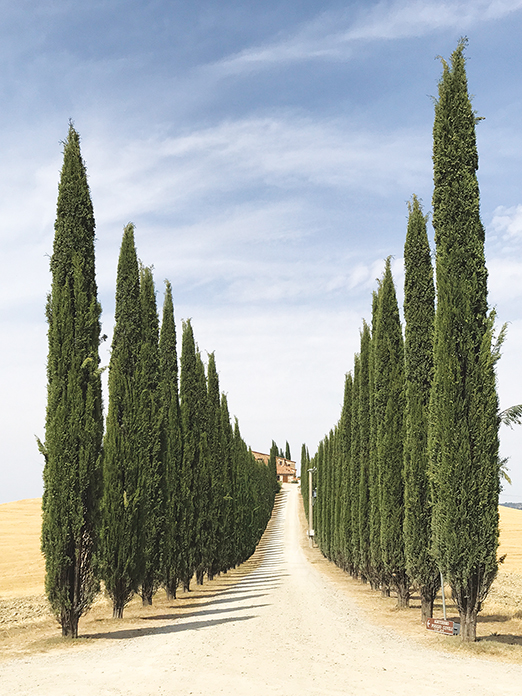
Photographer | Lidia Muntean, Romania Honor | Trees: First Place Title | Road of Tuscany artist’s statement | This photo was taken near Pienza and Montalcino. Location | Val D’Orcia, Italy Shot on iPhone 7 Plus
Are any of these smartphone pictures art? Who can say? What made Cartier-Bresson good was that he made you forget about the camera. He told stories. He showed you the world through his eyes. A problem with digital photography is that the viewer is not allowed to forget the camera. The technology has outstripped the human eye. No one can see the details, the sharpness and wide-angle focus that digital cameras do. The result is an intensified super-reality that often has an alien feel, like a novel written by artificial intelligence.
Cartier-Bresson famously said,
“Your first 10,000 photographs are your worst.”
That was a lot of film back then. Nowadays, it’s nothing for a budding photographer to reach that milestone. Along the way, you hope that these photographers lose some of their fascination with the technology. Then they can they start telling their own stories.
Columnist John Zeaman is a freelance art critic who writes regularly for The Record and Star Ledger newspapers. His reviews of exhibits in New Jersey have garnered awards from the New Jersey Press Association, the Society of Professional Journalists (New Jersey chapter) and the Manhattan-based Society of Silurians, the nation’s oldest press club. He is the author of Dog Walks Man (Lyons Press, September 2010) about art, landscape and dog walking.
